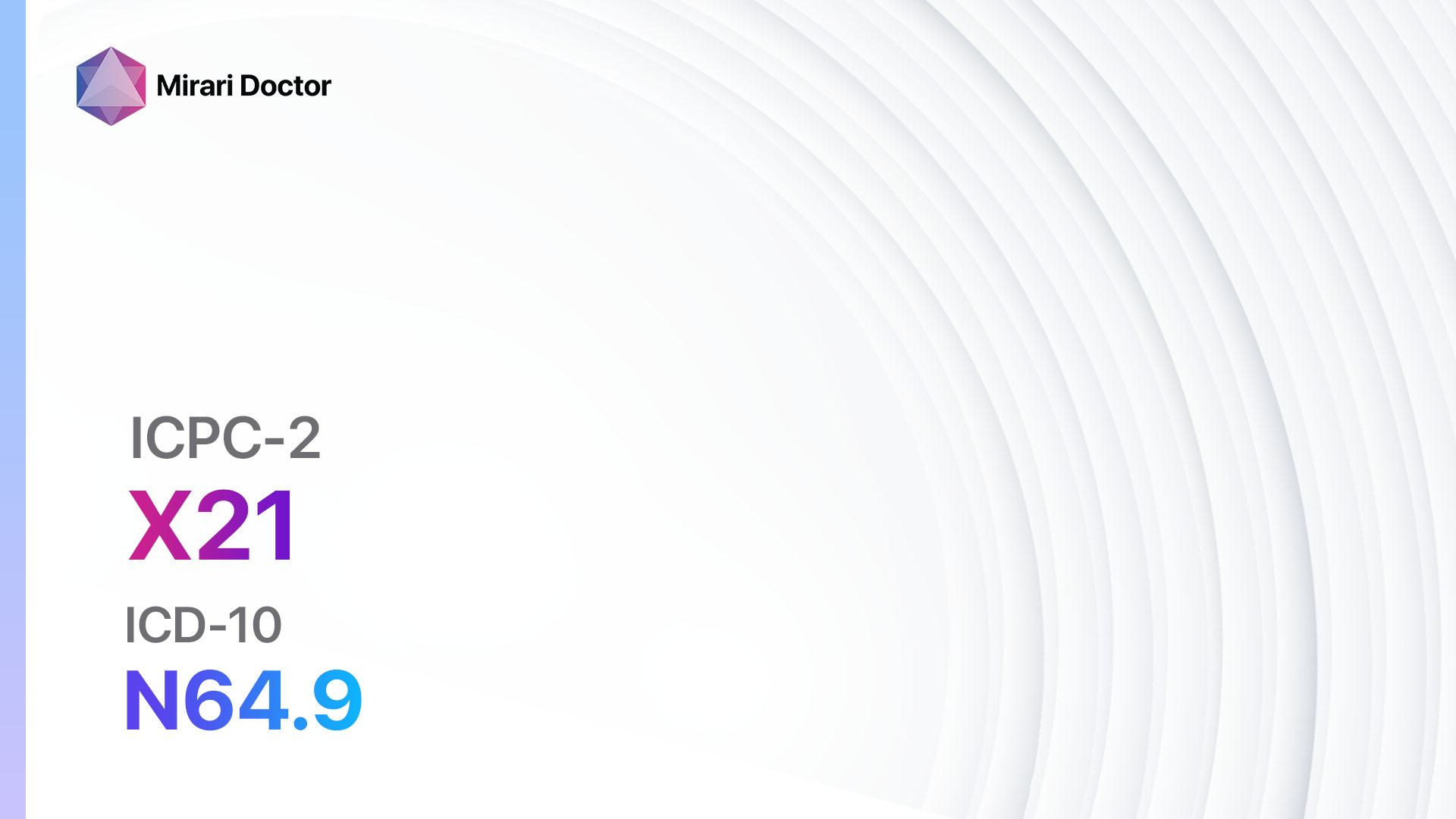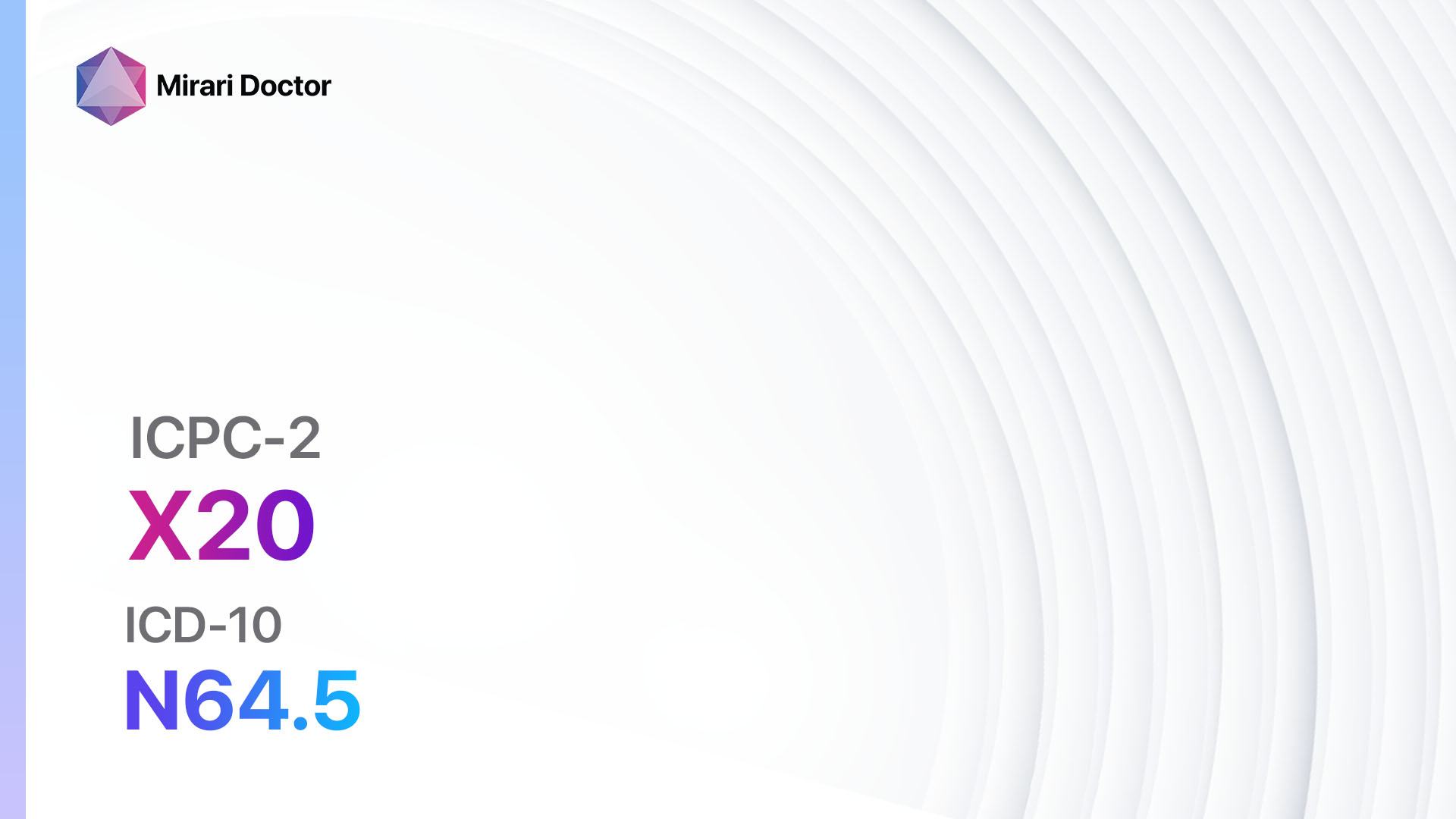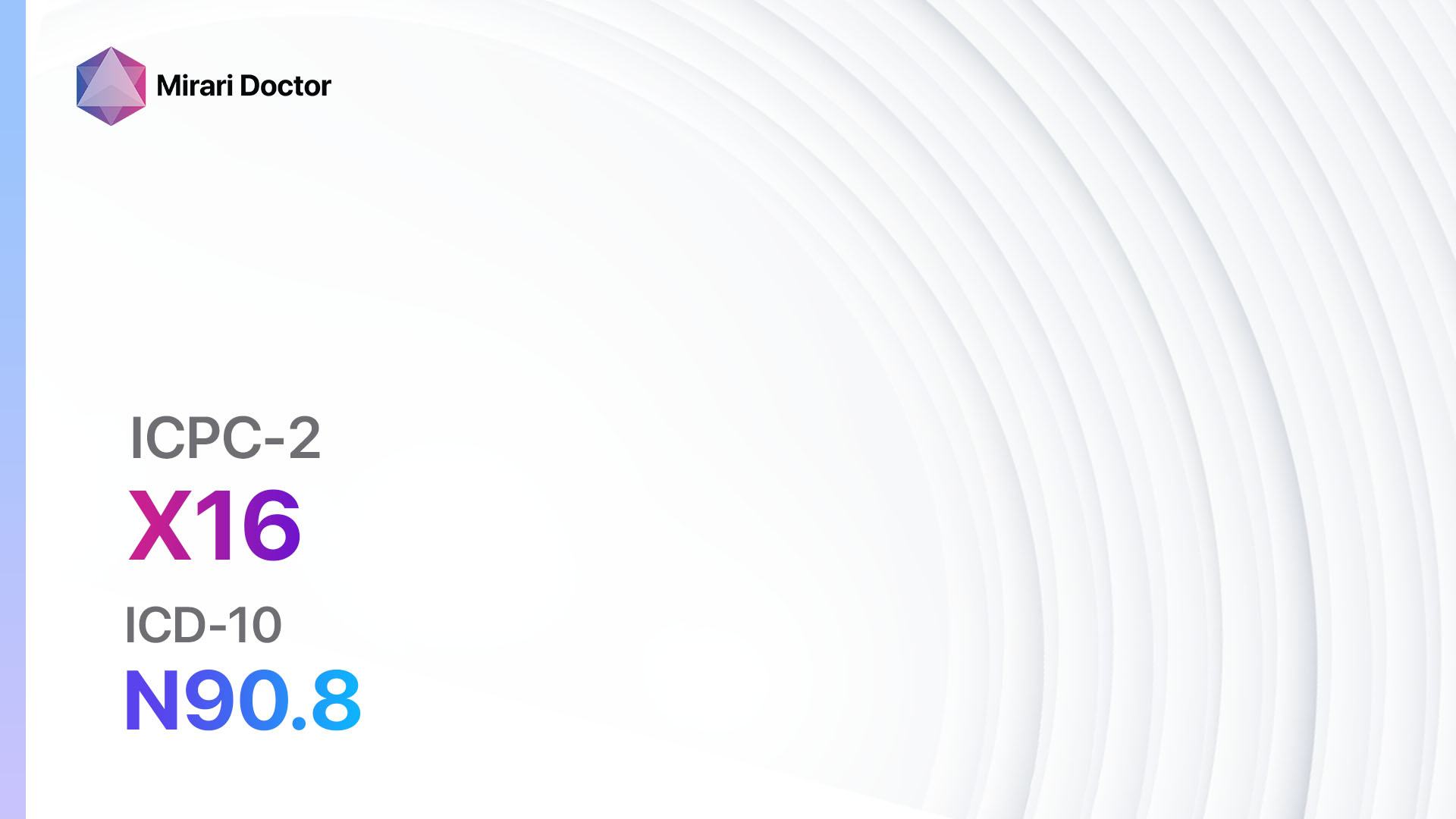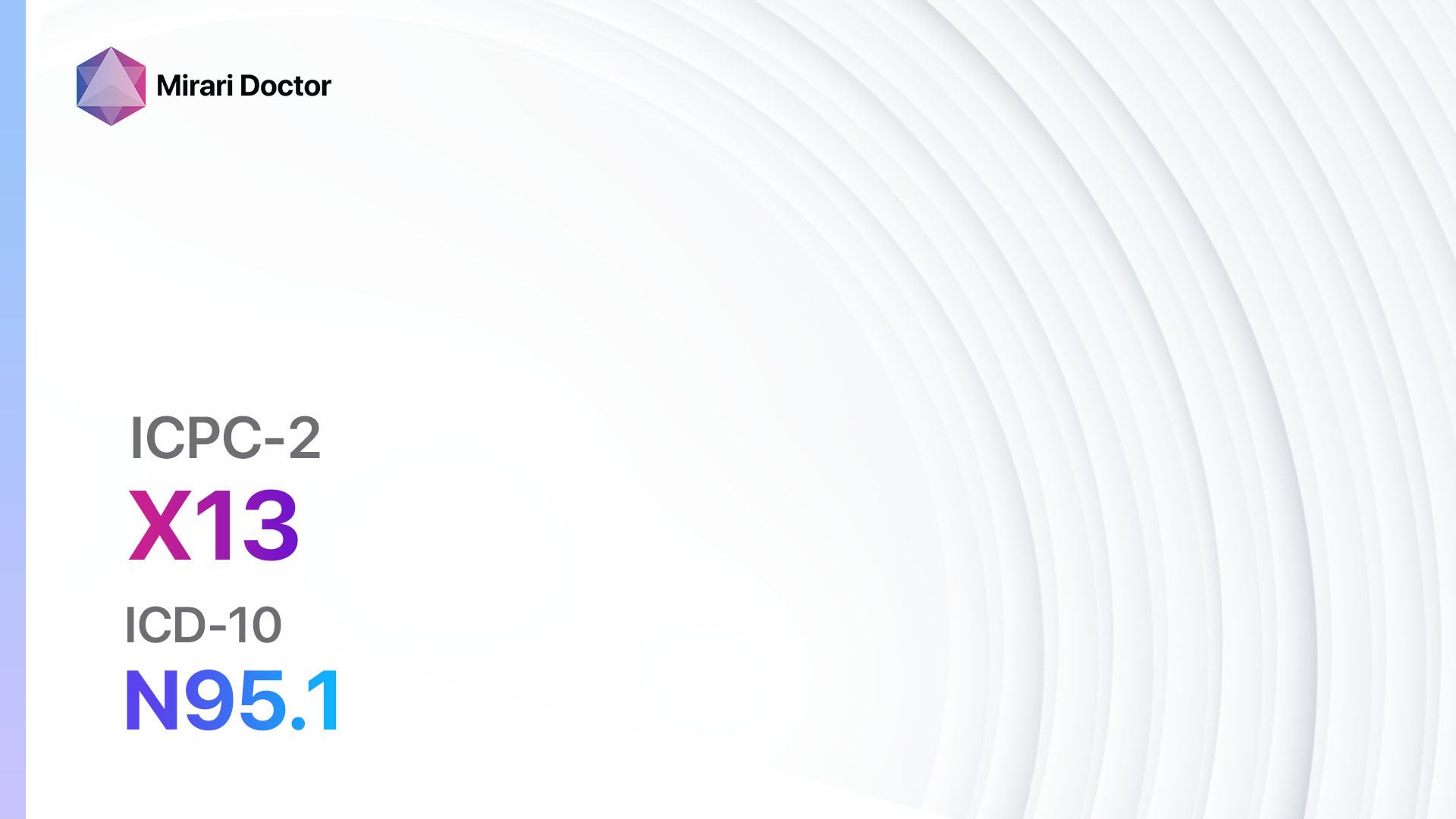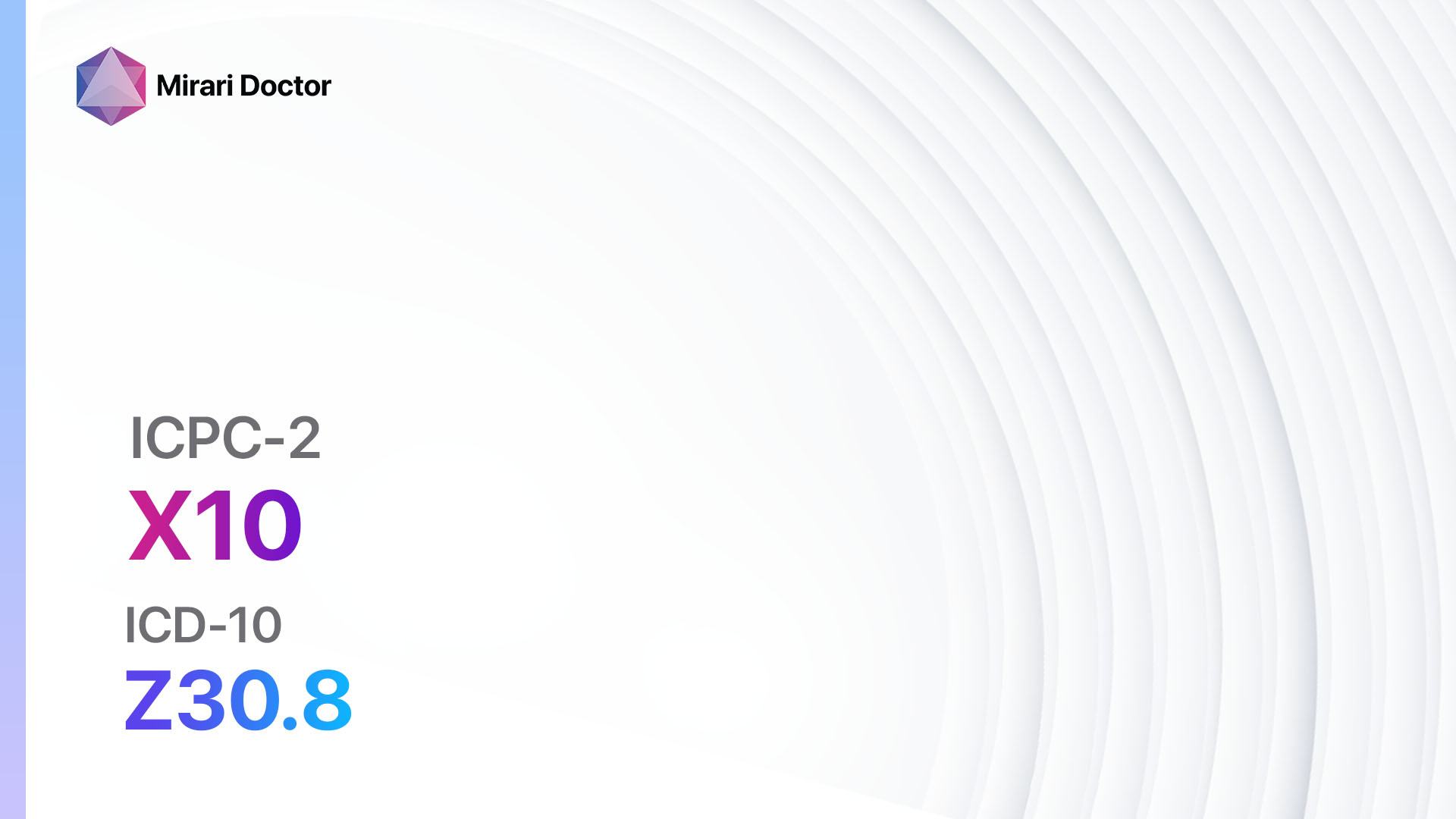
Introduction
Genital trichomoniasis is a sexually transmitted infection caused by the parasite Trichomonas vaginalis[1]. It is one of the most common sexually transmitted infections worldwide, affecting millions of women each year[2]. The aim of this guide is to provide healthcare professionals with a comprehensive overview of the diagnostic steps, possible interventions, and patient education for genital trichomoniasis in females.
Codes
Symptoms
- Vaginal itching and irritation[5]
- Abnormal vaginal discharge (yellow-green, frothy, and foul-smelling)[6]
- Painful urination[7]
- Pain during sexual intercourse[8]
- Lower abdominal pain[9]
Causes
- Sexual intercourse with an infected partner[10]
- Sharing sex toys with an infected person
Diagnostic Steps
Medical History
- Gather information about the patient’s sexual history, including recent sexual partners and any history of sexually transmitted infections.
- Ask about symptoms related to genital trichomoniasis, such as vaginal itching, abnormal discharge, and pain during urination or sexual intercourse.
- Inquire about any recent changes in sexual behavior or new sexual partners.
Physical Examination
- Perform a pelvic examination to assess for any signs of inflammation or discharge.
- Look for redness, swelling, or sores on the vulva and vaginal walls.
- Collect a sample of vaginal discharge for laboratory testing.
Laboratory Tests
- Wet mount microscopy: A sample of vaginal discharge is examined under a microscope to identify the presence of Trichomonas vaginalis.
- Nucleic acid amplification tests (NAATs): These tests detect the genetic material of the parasite and are highly sensitive and specific for diagnosing genital trichomoniasis.
- Culture: In some cases, a culture may be performed to grow the parasite for further identification and susceptibility testing.
Diagnostic Imaging
- There are no specific imaging modalities used for diagnosing genital trichomoniasis.
Other Tests
- HIV testing: It is recommended to offer HIV testing to all individuals diagnosed with genital trichomoniasis, as there is an increased risk of HIV transmission in the presence of this infection.
- Screening for other sexually transmitted infections: It is important to screen for other common sexually transmitted infections, such as chlamydia and gonorrhea, as they often coexist with genital trichomoniasis.
Follow-up and Patient Education
- Advise the patient to complete the full course of treatment, even if symptoms improve.
- Encourage the patient to inform their sexual partners about the infection and recommend that they also seek testing and treatment.
- Discuss safe sexual practices, including condom use, to prevent reinfection and transmission of the infection.
Possible Interventions
Traditional Interventions
Medications:
Top 5 drugs for Genital trichomoniasis:
- Metronidazole:
- Cost: Generic versions can be as low as $10 for a full course of treatment.
- Contraindications: Hypersensitivity to metronidazole or nitroimidazole derivatives.
- Side effects: Nausea, metallic taste in the mouth, and gastrointestinal upset.
- Severe side effects: Neurotoxicity, peripheral neuropathy, and disulfiram-like reaction with alcohol.
- Drug interactions: Alcohol, warfarin, and certain anticonvulsants.
- Warning: Avoid alcohol consumption during treatment and for at least 48 hours after completing the course.
- Tinidazole:
- Cost: Generic versions can range from $20 to $50 for a full course of treatment.
- Contraindications: Hypersensitivity to tinidazole or nitroimidazole derivatives.
- Side effects: Nausea, metallic taste in the mouth, and gastrointestinal upset.
- Severe side effects: Neurotoxicity, peripheral neuropathy, and disulfiram-like reaction with alcohol.
- Drug interactions: Alcohol, warfarin, and certain anticonvulsants.
- Warning: Avoid alcohol consumption during treatment and for at least 48 hours after completing the course.
- Secnidazole:
- Cost: Generic versions can range from $30 to $60 for a full course of treatment.
- Contraindications: Hypersensitivity to secnidazole or nitroimidazole derivatives.
- Side effects: Nausea, metallic taste in the mouth, and gastrointestinal upset.
- Severe side effects: Neurotoxicity, peripheral neuropathy, and disulfiram-like reaction with alcohol.
- Drug interactions: Alcohol, warfarin, and certain anticonvulsants.
- Warning: Avoid alcohol consumption during treatment and for at least 48 hours after completing the course.
- Clindamycin:
- Cost: Generic versions can range from $10 to $30 for a full course of treatment.
- Contraindications: Hypersensitivity to clindamycin or lincomycin.
- Side effects: Nausea, diarrhea, and gastrointestinal upset.
- Severe side effects: Severe allergic reactions, pseudomembranous colitis.
- Drug interactions: Erythromycin and other drugs that inhibit cytochrome P450 enzymes.
- Warning: Monitor for signs of pseudomembranous colitis, especially in patients with a history of gastrointestinal disease.
- Azithromycin:
- Cost: Generic versions can range from $10 to $30 for a full course of treatment.
- Contraindications: Hypersensitivity to azithromycin or macrolide antibiotics.
- Side effects: Nausea, diarrhea, and gastrointestinal upset.
- Severe side effects: Severe allergic reactions, hepatotoxicity.
- Drug interactions: Warfarin, digoxin, and certain antacids.
- Warning: Monitor liver function in patients with pre-existing liver disease.
Alternative Drugs:
- Nitazoxanide: An alternative treatment option for patients who cannot tolerate or have failed standard therapy.
- Paromomycin: Another alternative treatment option for patients who cannot tolerate or have failed standard therapy.
- Furazolidone: An alternative treatment option for patients who cannot tolerate or have failed standard therapy.
- Ornidazole: An alternative treatment option for patients who cannot tolerate or have failed standard therapy.
- Iodoquinol: An alternative treatment option for patients who cannot tolerate or have failed standard therapy.
Surgical Procedures:
- There are no surgical procedures indicated for the treatment of genital trichomoniasis.
Alternative Interventions
- Probiotics: Probiotic supplements containing Lactobacillus species may help restore the natural vaginal flora and reduce the risk of recurrent infections. Cost: $10-$30 per month.
- Tea tree oil: Topical application of tea tree oil may have antimicrobial properties and help alleviate symptoms. Cost: $10-$20 per bottle.
- Garlic: Consumption of raw garlic or garlic supplements may have antimicrobial properties. Cost: $5-$10 per bottle of garlic supplements.
- Boric acid suppositories: Boric acid suppositories can help restore the natural pH of the vagina and reduce symptoms. Cost: $10-$20 per box of suppositories.
- Sitz baths: Soaking in warm water with added salts or herbal extracts may help relieve symptoms. Cost: $10-$20 for a sitz bath kit.
Lifestyle Interventions
- Avoiding sexual activity until the infection is fully treated to prevent reinfection.
- Practicing safe sex by using condoms consistently and correctly.
- Avoiding douching, as it can disrupt the natural vaginal flora and increase the risk of infection.
- Wearing cotton underwear and avoiding tight-fitting clothing to promote airflow and reduce moisture in the genital area.
- Maintaining good hygiene by washing the genital area with mild soap and water.
It is important to note that the cost ranges provided are approximate and may vary depending on the location and availability of the interventions.
Mirari Cold Plasma Alternative Intervention
Understanding Mirari Cold Plasma
- Safe and Non-Invasive Treatment: Mirari Cold Plasma is a safe and non-invasive treatment option for various skin conditions. It does not require incisions, minimizing the risk of scarring, bleeding, or tissue damage.
- Efficient Extraction of Foreign Bodies: Mirari Cold Plasma facilitates the removal of foreign bodies from the skin by degrading and dissociating organic matter, allowing easier access and extraction.
- Pain Reduction and Comfort: Mirari Cold Plasma has a local analgesic effect, providing pain relief during the treatment, making it more comfortable for the patient.
- Reduced Risk of Infection: Mirari Cold Plasma has antimicrobial properties, effectively killing bacteria and reducing the risk of infection.
- Accelerated Healing and Minimal Scarring: Mirari Cold Plasma stimulates wound healing and tissue regeneration, reducing healing time and minimizing the formation of scars.
Mirari Cold Plasma Prescription
Video instructions for using Mirari Cold Plasma Device – X73 Genital trichomoniasis female (ICD-10:A59.0)
| Mild | Moderate | Severe |
| Mode setting: 1 (Infection) Location: 0 (Localized) Morning: 15 minutes, Evening: 15 minutes | Mode setting: 1 (Infection) Location: 0 (Localized) Morning: 30 minutes, Lunch: 30 minutes, Evening: 30 minutes | Mode setting: 1 (Infection) Location: 0 (Localized) Morning: 30 minutes, Lunch: 30 minutes, Evening: 30 minutes |
| Mode setting: 2 (Wound Healing) Location: 0 (Localized) Morning: 15 minutes, Evening: 15 minutes | Mode setting: 2 (Wound Healing) Location: 0 (Localized) Morning: 30 minutes, Lunch: 30 minutes, Evening: 30 minutes | Mode setting: 2 (Wound Healing) Location: 0 (Localized) Morning: 30 minutes, Lunch: 30 minutes, Evening: 30 minutes |
| Mode setting: 2 (Wound Healing) Location: 0 (Localized) Morning: 15 minutes, Evening: 15 minutes | Mode setting: 2 (Wound Healing) Location: 0 (Localized) Morning: 30 minutes, Lunch: 30 minutes, Evening: 30 minutes | Mode setting: 2 (Wound Healing) Location: 0 (Localized) Morning: 30 minutes, Lunch: 30 minutes, Evening: 30 minutes |
| Mode setting: 7 (Immunotherapy) Location:1 (Sacrum) Morning: 15 minutes, Evening: 15 minutes | Mode setting: 7 (Immunotherapy) Location:1 (Sacrum) Morning: 30 minutes, Lunch: 30 minutes, Evening: 30 minutes | Mode setting: 7 (Immunotherapy) Location:1 (Sacrum) Morning: 30 minutes, Lunch: 30 minutes, Evening: 30 minutes |
| Total Morning: 60 minutes approx. $10 USD, Evening: 60 minutes approx. $10 USD | Total Morning: 120 minutes approx. $20 USD, Lunch: 120 minutes approx. $20 USD, Evening: 120 minutes approx. $20 USD, | Total Morning: 120 minutes approx. $20 USD, Lunch: 120 minutes approx. $20 USD, Evening: 120 minutes approx. $20 USD, |
| Usual treatment for 7-60 days approx. $140 USD – $1200 USD | Usual treatment for 6-8 weeks approx. $2,520USD – $3,360 USD | Usual treatment for 3-6 months approx. $5,400 USD – $10,800 USD |
 |
|
Use the Mirari Cold Plasma device to treat Genital trichomoniasis female effectively.
WARNING: MIRARI COLD PLASMA IS DESIGNED FOR THE HUMAN BODY WITHOUT ANY ARTIFICIAL OR THIRD PARTY PRODUCTS. USE OF OTHER PRODUCTS IN COMBINATION WITH MIRARI COLD PLASMA MAY CAUSE UNPREDICTABLE EFFECTS, HARM OR INJURY. PLEASE CONSULT A MEDICAL PROFESSIONAL BEFORE COMBINING ANY OTHER PRODUCTS WITH USE OF MIRARI.
Step 1: Cleanse the Skin
- Start by cleaning the affected area of the skin with a gentle cleanser or mild soap and water. Gently pat the area dry with a clean towel.
Step 2: Prepare the Mirari Cold Plasma device
- Ensure that the Mirari Cold Plasma device is fully charged or has fresh batteries as per the manufacturer’s instructions. Make sure the device is clean and in good working condition.
- Switch on the Mirari device using the power button or by following the specific instructions provided with the device.
- Some Mirari devices may have adjustable settings for intensity or treatment duration. Follow the manufacturer’s instructions to select the appropriate settings based on your needs and the recommended guidelines.
Step 3: Apply the Device
- Place the Mirari device in direct contact with the affected area of the skin. Gently glide or hold the device over the skin surface, ensuring even coverage of the area experiencing.
- Slowly move the Mirari device in a circular motion or follow a specific pattern as indicated in the user manual. This helps ensure thorough treatment coverage.
Step 4: Monitor and Assess:
- Keep track of your progress and evaluate the effectiveness of the Mirari device in managing your Genital trichomoniasis female. If you have any concerns or notice any adverse reactions, consult with your health care professional.
Note
This guide is for informational purposes only and should not replace the advice of a medical professional. Always consult with your healthcare provider or a qualified medical professional for personal advice, diagnosis, or treatment. Do not solely rely on the information presented here for decisions about your health. Use of this information is at your own risk. The authors of this guide, nor any associated entities or platforms, are not responsible for any potential adverse effects or outcomes based on the content.
Mirari Cold Plasma System Disclaimer
- Purpose: The Mirari Cold Plasma System is a Class 2 medical device designed for use by trained healthcare professionals. It is registered for use in Thailand and Vietnam. It is not intended for use outside of these locations.
- Informational Use: The content and information provided with the device are for educational and informational purposes only. They are not a substitute for professional medical advice or care.
- Variable Outcomes: While the device is approved for specific uses, individual outcomes can differ. We do not assert or guarantee specific medical outcomes.
- Consultation: Prior to utilizing the device or making decisions based on its content, it is essential to consult with a Certified Mirari Tele-Therapist and your medical healthcare provider regarding specific protocols.
- Liability: By using this device, users are acknowledging and accepting all potential risks. Neither the manufacturer nor the distributor will be held accountable for any adverse reactions, injuries, or damages stemming from its use.
- Geographical Availability: This device has received approval for designated purposes by the Thai and Vietnam FDA. As of now, outside of Thailand and Vietnam, the Mirari Cold Plasma System is not available for purchase or use.
References
- Kissinger P. Trichomonas vaginalis: a review of epidemiologic, clinical and treatment issues. BMC Infect Dis. 2015;15:307. doi:10.1186/s12879-015-1055-0
- World Health Organization. Global incidence and prevalence of selected curable sexually transmitted infections – 2008. World Health Organization; 2012.
- World Organization of Family Doctors (WONCA). ICPC-2-R: International Classification of Primary Care. Oxford University Press; 2005.
- World Health Organization. International Statistical Classification of Diseases and Related Health Problems 10th Revision. World Health Organization; 2019.
- Meites E, Gaydos CA, Hobbs MM, et al. A Review of Evidence-Based Care of Symptomatic Trichomoniasis and Asymptomatic Trichomonas vaginalis Infections. Clin Infect Dis. 2015;61 Suppl 8(Suppl 8):S837-S848. doi:10.1093/cid/civ738
- Schwebke JR, Burgess D. Trichomoniasis. Clin Microbiol Rev. 2004;17(4):794-803. doi:10.1128/CMR.17.4.794-803.2004
- Sobel JD. Trichomoniasis. In: Klausner JD, Hook EW, eds. Current Diagnosis & Treatment of Sexually Transmitted Diseases. McGraw Hill; 2007:75-82.
- Menezes CB, Frasson AP, Tasca T. Trichomoniasis – are we giving the deserved attention to the most common non-viral sexually transmitted disease worldwide?. Microb Cell. 2016;3(9):404-419. Published 2016 Sep 5. doi:10.15698/mic2016.09.526
- Secor WE, Meites E, Starr MC, Workowski KA. Neglected parasitic infections in the United States: trichomoniasis. Am J Trop Med Hyg. 2014;90(5):800-804. doi:10.4269/ajtmh.13-0723
- Soper D. Trichomoniasis: under control or undercontrolled?. Am J Obstet Gynecol. 2004;190(1):281-290. doi:10.1016/j.ajog.2003.08.023
Related articles
Made in USA













